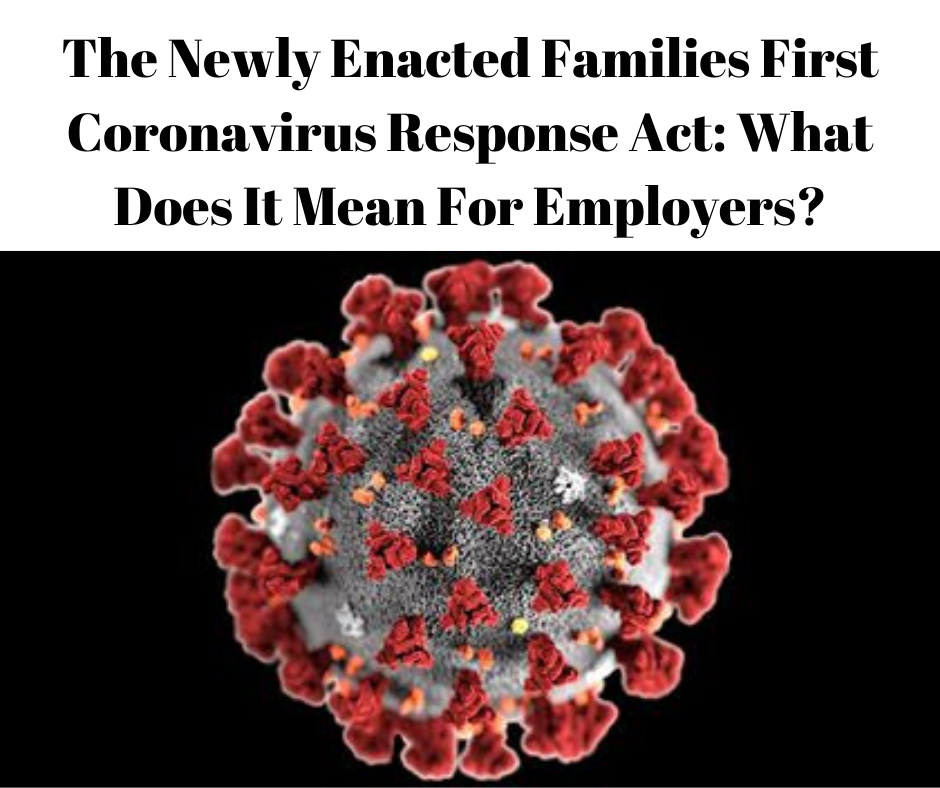-
The Newly Enacted Families First Coronavirus Response Act: What Does It Mean For Employers?

On March 18, 2020, the President signed into law the Families First Coronavirus Response Act (the “Family First Act”), which will go into effect on April 1, 2020. The Family First Act contains unprecedented provisions that will effect employers with 1-500 employees, including federally mandated paid sick leave for qualifying employees and an expansion of leave available under the Family and Medical Leave Act (”FMLA”). Note: even employers who have not been covered by FMLA in the past (i.e. employers with less than 50 employees) may be covered by the expanded provisions of the FMLA.
The Families First Act provides tax credits for employers who are required to provide the Paid Sick Leave and Expanded FMLA Leave described below.
As a practical matter, there are requirements for employers to provide notice to employees of the provisions of the Family First Act, and there are employer responsibilities to grant and correctly designate leave to employees. In a time when employers may be dealing with ongoing business, leave related to reduced available work, or the need to increase the workforce, it is crucial to understand these obligations and employer options.
In summary, private employers who have 1-500 employees and some public employers must provide the following:
Paid Sick Leave- Employers must provide up to 10 days of paid sick leave to employees who are unable to work (or telework) because:
- The employee is subject to a Federal, State, or local quarantine or isolation order related to COVID-19;
- The employee has been advised by a health care provider to self-quarantine due to concerns related to COVID-19;
- The employee is experiencing symptoms of COVID-19 and seeking a medical diagnosis;
- The employee is caring for an individual subject to a quarantine or isolation order or who has been advised by a health care provider to self-quarantine;
- The employee is caring for a son or daughter if the child’s school or place of care has been closed or the child’s child care provider is unavailable due to COVID- 19; or
- For substantially similar conditions.
- This applies to all employees, no matter how long they have been employed, with pay capped at (1) $511 per day and $5,110 in the aggregate for leave under the first three bullet points set forth above, and (2) $200 per day and $2,000 in the aggregate for leave under bullet points four through six.
- An employer cannot require an employee to use other unpaid leave offered by the employer prior to using this leave.
- The employer may not require an employee using this sick leave to find a replacement employee to cover the hours during which the employee is being paid for sick leave.
- Employers who do not provide this leave will be considered in violation of the Fair Labor Standards Act, which carries with it significant penalties.
- Applies to employers of 1-499 employees and extends through December 31, 2020.
- Provides up to 12 weeks of leave to employees who are unable to work (or telework) due to the need to care for a son or daughter under 18 years of age if the school or place of care has been closed, or the child care provider is unavailable due to a COVID- 19 public health emergency.
- The first 10 days of leave do not need to be paid (but are covered by the Paid Sick Leave above); and the remaining leave is to be paid at least two-thirds of the employee’s regular rate of pay, capped at $200 per day and $10,000 in the aggregate.
- This applies to full-time and part-time employees who have been employed for at least 30 calendar days.
- Provides position restoration rights to employees for employers with 25 or more employees.
Employers should also be aware that the Families First Act requires health plans to provide coverage for COVID-19 testing and related services without cost for the period of national emergency.
Refundable payroll tax credits equal to 100 percent of the qualified paid sick leave wages and the qualified family leave wages are available. The tax credits are allowed against tax imposed by IRC §3111(a) (the employer portion of Social Security taxes).
In a time when businesses are addressing rapidly evolving federal, state and local mandates and recommendations relating COVID-19, it is important to understand and correctly apply the rights and responsibilities granted by the Families First Act. Employers with less than 50 employees who have concerns about the financial implications of the expanded FMLA leave should be focused on exemptions that may be granted. There are provisions of the Families First Act that may not be covered above, specific to each employer’s scenario. Attorneys at Wharton, Aldhizer & Weaver are available to assist employers with compliance and to answer any questions on these matters.
Since the enactment of the FFCRA, the Department of Labor has provided additional guidance and model notices containing information that covered employers are required to provide to employees.
Check back for additional blogs with new information on updated guidance provided by the Department of Labor that will be published under the Resources tab at wawlaw.com.
This blog is provided by Lauren Darden, Partner at Wharton Aldhizer & Weaver PLC. Lauren can be reached at ldarden@wawlaw.com or 540.438.5377.Tell a Friend
- Employers must provide up to 10 days of paid sick leave to employees who are unable to work (or telework) because:
